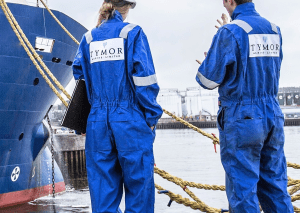
Naval architecture firm Tymor Marine and the University of Edinburgh – supported and funded by CENSIS – have created a machine vision tool, powered by deep learning, that will automate and more accurately undertake the reading of draught marks on ships.
Draught marks – numbers marked in increments on the side of vessels to indicate how much of the ship is submerged – are currently measured and recorded by eye from the quay or a boat, similar to the way they have been for more than two millennia.
However, the measurements are often open to interpretation – waves, faded markings, lighting, and marine growth are just some of the factors that can lead to different readings being taken from the same vessel. Mariners also have to check the marks on both sides of a ship, which can take hours, requires a boat, and involves health and safety risks.
Accurate draught readings are critical for ensuring a ship’s stability, indicating how much cargo it is carrying and what depths it can safely navigate. The readings are also checked by port authorities to ensure vessels are complying with local limits and regulations.
The technology uses algorithms applied to video recordings of ships to accurately identify where the water line reaches on a ship’s hull. Tymor Marine and the team at the University of Edinburgh – led by Dr Hakan Bilen of the university’s School of Informatics – will continue to develop the technology, with the aim of creating a smartphone app that allows seafarers to record draught marks and upload them to the cloud for real-time readings.